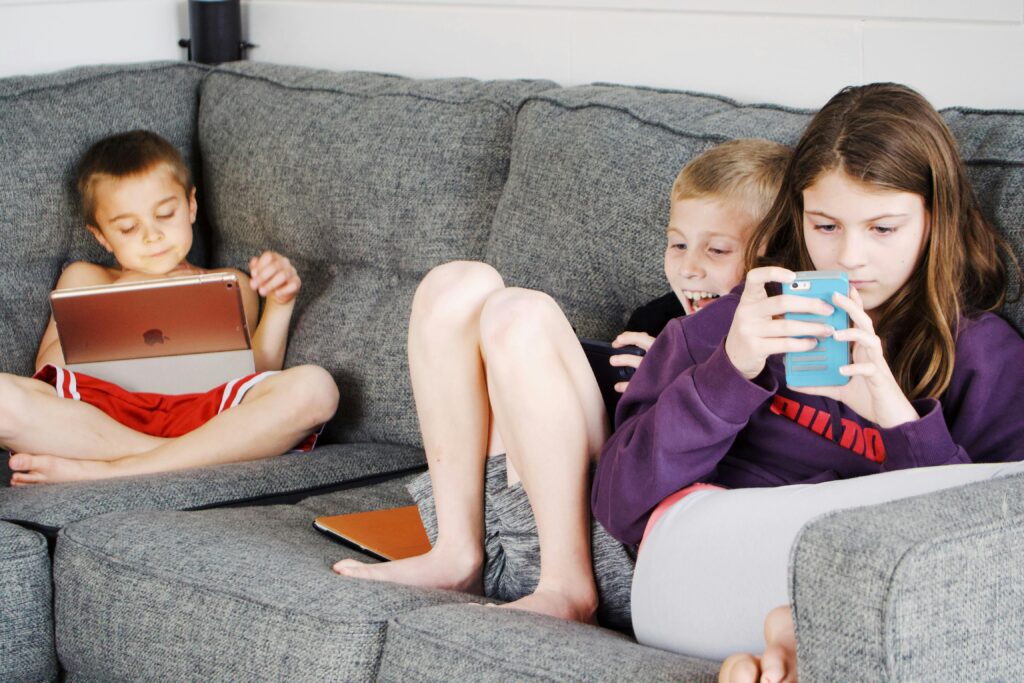
Hey there, tech-savvy dads! In this digital age, finding the right technology for your kids can be a bit overwhelming. With a myriad of options available, it’s essential to choose devices that are not only entertaining but also safe and educational. In this blog post, we’ll dive into the world of kid-friendly technology, helping you navigate through the choices of tablets, iPads, computers, and more. Let’s embark on this tech-savvy journey together!
The Importance of Kid-Friendly Tech
Before we jump into the nitty-gritty details, let’s discuss why choosing the right technology for your little ones is crucial. Kid-friendly tech can enhance their learning experience, foster creativity, and provide a safe space for exploration. In an era where technology is an integral part of daily life, introducing your kids to age-appropriate devices can be a stepping stone to a world of educational opportunities. From interactive learning apps that make math fun to creative games that stimulate their imagination, the right technology can play a pivotal role in shaping your child’s cognitive development. Moreover, it can also serve as a bonding tool, allowing you to explore the digital world together and share in the excitement of discovery. By investing in kid-friendly tech, you’re not just providing a source of entertainment; you’re opening doors to a realm of possibilities that can contribute positively to your child’s growth.
What to Look for in Kid-Friendly Devices
Now that we understand the significance of kid-friendly tech, let’s explore the key factors to consider when making your purchase. Durability is paramount because, let’s face it, kids can be a bit rough on their belongings. Look for devices with sturdy construction, reinforced corners, and scratch-resistant screens. Devices like tablets and iPads with “Kid-Proof” cases are a solid choice as they are designed to withstand the occasional drops and spills that are inevitable in the hands of little ones. Equally important are parental controls – the digital gatekeepers that ensure your child’s online experience remains safe and age-appropriate. Opt for devices with robust parental control features that empower you to monitor and restrict your child’s access to inappropriate content. These controls often include options to set time limits, block specific websites, and monitor app usage, giving you peace of mind while your child explores the digital world.
When selecting a device, make sure it offers age-appropriate content tailored to your child’s developmental stage. Whether it’s interactive learning apps for preschoolers or more complex educational games for older kids, having a variety of content that aligns with your child’s age and interests is key. Educational value should not be overlooked – the best kid-friendly devices strike a balance between entertainment and learning. Seek out devices that offer a diverse range of educational apps covering subjects like math, science, language arts, and more. This ensures your child is not only engaged but also acquiring new skills and knowledge through their screen time. By focusing on durability, parental controls, age-appropriate content, and educational value, you can make a well-informed decision when choosing the perfect kid-friendly tech for your little ones.
Top Picks for Kid-Friendly Tablets
Now that we know what to look for, let’s explore some top picks in the world of kid-friendly tablets.
The Amazon Fire Kids Edition is a standout choice for many parents. Its robust parental controls, durable design, and extensive library of age-appropriate content make it a reliable option. The “Kid-Proof” case ensures that the tablet can handle the rough and tumble of a child’s world, making it an ideal companion for young explorers. If you’re an Apple aficionado, the iPad (7th Gen) with kid-friendly accessories is a solid option. Paired with accessories like a shockproof case and a screen protector, this iPad can withstand the daily adventures of your little one. It offers a vast array of educational apps and games through the App Store, providing a well-rounded digital experience.
Samsung Galaxy Tab A Kids Edition is another noteworthy tablet in the kid-friendly realm. With a vibrant display, long battery life, and a durable build, it’s designed to cater to the needs of young users. The pre-installed Kids Mode ensures a safe and engaging digital space for your child to explore. When it comes to kid-friendly tablets, these options offer a blend of durability, safety features, and educational content, making them excellent choices for tech-savvy parents.
Kid-Friendly Computers: A Smart Investment
For those considering a more versatile option, a kid-friendly computer might be the way to go.
The HP Pavilion x360 2-in-1 Laptop stands out with its versatility. This laptop can function as both a traditional laptop and a tablet, providing flexibility for various activities. With a durable build, it can withstand the demands of a busy household, making it a smart investment for older kids and teenagers. On a budget-friendly note, the Acer Chromebook 11 is an excellent choice. With a rugged design and a spill-resistant keyboard, it’s built to withstand the rigors of daily use. The Chrome OS also allows for easy parental controls, providing an added layer of security. These kid-friendly computers offer a gateway to a broader range of activities, from educational tasks to creative projects, making them worthwhile investments for the tech-savvy family.
In the next section, we’ll discuss how to set up a kid-friendly digital environment to ensure a safe and enriching experience for your little ones. Stay tuned for tips on creating user accounts, installing parental control apps, and establishing screen time rules!
Setting Up a Kid-Friendly Digital Environment
Now that you’ve chosen the perfect kid-friendly device, let’s talk about setting up a safe and engaging digital environment for your child. The first step is to create separate user accounts on shared devices. This allows you to customize settings for each child, ensuring that they have access to age-appropriate content. Most devices, whether tablets or computers, offer the option to create distinct user profiles, making it easy to tailor the digital experience for each member of your family.
After creating user accounts, consider installing reliable parental control apps. These apps act as an additional layer of protection, offering features like time limits, content filters, and activity monitoring. Popular choices include Qustodio, Norton Family, and Family Link by Google. By leveraging these tools, you can have greater control over your child’s digital activities and ensure a safer online environment.
It’s crucial to establish clear screen time rules from the get-go. While technology can be beneficial, maintaining a healthy balance between screen time and other activities is key. Set realistic limits based on your child’s age and needs, and encourage a routine that incorporates various activities, both online and offline. This not only promotes a healthier lifestyle but also teaches your child to manage their time effectively.

In addition to these measures, regularly communicate with your child about responsible digital behavior. Educate them on the importance of privacy, online etiquette, and the potential risks associated with certain online activities. Open communication creates a foundation of trust and helps your child develop responsible habits in the digital world.
Conclusion
In conclusion, finding the right kid-friendly tech for your little ones requires a bit of research and consideration. Whether you opt for a tablet, iPad, or computer, prioritizing durability, parental controls, and educational value is key. By making informed choices and setting up a secure digital environment, you can provide your kids with a safe and enriching tech experience. Happy parenting in the digital age!
Remember, technology is a tool that, when used responsibly, can enhance your child’s learning and creativity. Stay engaged in their digital world, explore educational content together, and celebrate the milestones they achieve through technology. With the right approach, kid-friendly tech can be a positive and empowering force in your child’s development. Embrace the journey, and enjoy watching your little ones flourish in the ever-evolving landscape of the digital age!
Want to see our tips for leading our kids in a digital world? Check it out here!


















